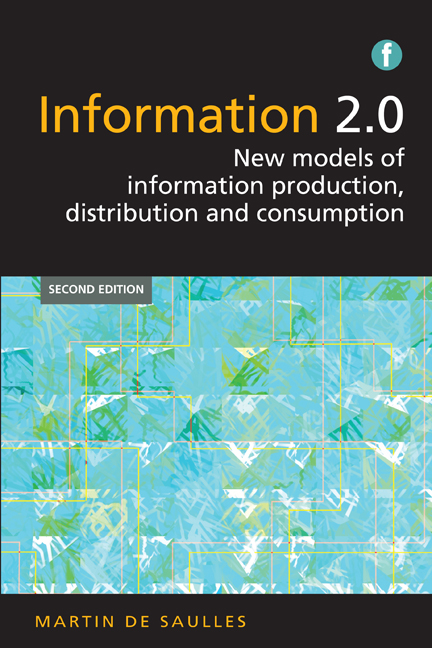4 - New models of information distribution
Published online by Cambridge University Press: 08 June 2018
Summary
Introduction
At the heart of the current information revolution are radical changes to the way information, in all its forms, is distributed. Obviously, the internet has been a key driver of these changes, but so too have other advances and investments in communication networks, particularly on the mobile front. By the beginning of 2015 almost one-half (approximately 3 billion people) of the world's population were connected to the internet while more than 90% of the world had mobile phones; much of the information we consume is carried across these networks. Broadly, we are moving from a centralized broadcast model of information distribution to a more distributed and, some would argue, more democratic model, where many of the established information gatekeepers are being bypassed. Just as the railways in the 19th century transformed the movement of goods and people across many western economies, communication systems are doing the same for information. However, a key difference between these networks is the ease of access with which individuals and organizations can access them; another is the fundamental difference between the physical world and the digital. Systems for moving objects such as roads and railways are limited in their capacity to carry people and vehicles, as anyone who has to travel in rush hour knows; digital networks, particularly those using optical fibre, are far less constrained. This chapter explains some of the key technical characteristics of our communication networks within the context of the radical changes that are taking place in the information sector. The competing interests of information producers and network operators are explored and the implications for information professionals considered.
The architecture of the internet
To appreciate the significance of the changes that are taking place in the world of information it is important to understand how the internet works, at a basic level at least. While anyone who has grown up in the last 20 years, the socalled ‘digital natives’, may take an internet connection for granted it is worth looking back at where this network came from and how it evolved. The significance of this will become clearer when we consider some of the threats to the open nature and what Zittrain (2008) calls the ‘generative’ nature of the internet.
- Type
- Chapter
- Information
- Information 2.0New models of information production, distribution and consumption, pp. 75 - 102Publisher: FacetPrint publication year: 2015



